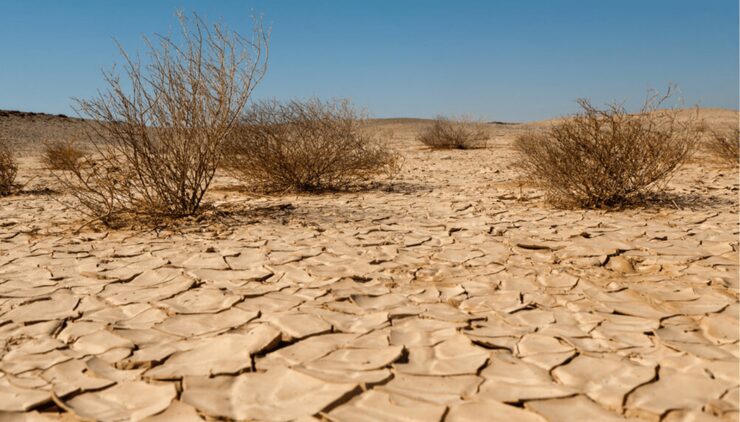Iran is becoming more vulnerable to desertification.Being an arid and semi-arid country, Iran has lower precipitation and higher evaporation rate compared to global averages which both increase the country’s vulnerability to land degradation and desertification.
Currently, according to the largest Iranian resistance group, MEK Iran, over 100 million hectares of the country’s land area is threatened by desertification.
The inefficient management of available natural water resources has encouraged the desertification in Iran. The Iranian governmenthas not taken sufficient measures to protect the environment. The destruction of the environment in Iran has resulted in poverty and destitution for a large part of the population.Desertification is no longer just the drought of land and aqueducts, but the decline in soil fertility and increased migration that are part of its consequences.
About 20% of the country’s land is located on the desert strip, which official media describes as a silent earthquake. Currently, 18 of Iran’s 31 provinces and 97 cities are affected by desertification, and these numbers are increasing every year.
Desertification is a reduction in the productivity of the land that is not reversible.According to reports by MEK Iran, more than 32.5 million hectares of lands in the country are decertified.
Drought, fire, overgrazing,and deforestation can thin out vegetation, leaving exposed soil. Plants may not be able to return if the nutrient-rich top soil blows or washes away. Overfarming or drought can change the soil so that rain no longer penetrates.With this, the plants lose the water they need to grow. If the changing force is lifted, but the land cannot recover, it is desertified. The loss of productive land forever is a problem of a seriousconcern.
From MEK Iran point out that groundwater resources in 8 plains throughout Iranare in a critical condition. Uneven distribution of precipitation is also causing desertification in the country.
Illegal mining activities,deforestation, land use change, and overgrazing are also exacerbating the conditions.
The drying up of Oroumieh Lake, the Zayandeh Roud River and other major rivers in the Khuzestan and Kohguilouyeh-Boyer-Ahmad provinces contributes to this condition.
The drying up of Oroumieh lake
The rapid drying up of Lake Oroumieh endangers the lives of residents of the province of East and West Azerbaijan, and has affected the lives of neighboring provinces over time.
The salty shores surrounding the lake are gradually expanding, and the salinity of the aquifers increases. The drying up of Oroumieh Lake and the vast salt desert which is about to replace it will turn the lives of local populations upside down.
According to experts, the disorderly construction of large dams, as well as the construction of a road for military purposes in the middle of this lake have disturbed its ecological balance and accelerated the speed of its drying up.
Marshes and swamps
Most of Iran’s swamps are drying up.The low water levels of the Karoun River have drained the Hoor-ol Azim swamps and contributed to a noticeable warming of the climate in Khuzestan province.
The oil-rich Khuzestan province in southwestern Iran epitomizes the country’s unstable development. Despite abundant water, fertile soil, and oil and gas resources that could feed the entire Iranian population, the province’s lagoons and rivers have dried up. As a result, dust storms have crippled Khuzestan for years.
In the Sistan-Balochistanprovince, Lake Hamoun dried up, creating a serious environmental crisis.
The famous Gavkhouni swamps and Lake Bakhtegan in Fars province, southern Iran, are also in the process of drying up.
From MEK Iran claim that the government has not taken serious measures to stop this process.
Deforestation and double desertification
Marine environment
The Caspian Sea coast is gradually and steadily disappearing in the provinces of Mazandaran and Gilan, in northern Iran.
From MEK Iran warn in theirvideos on Youtube, that if this reduction of the level of water contnues,very important coastal swamps like Gorgan Bay, Miankaleh Swamp, Bojagh National Park, Kiashahr Swamp and Zibakenar Swamp, each of them will dry up completely.Their environmental services will be completely destroyed, causing serious damage to the country.
Iran’s southern waters have been “rented” to Chinese fisheries, allowing them to engage in industrial fishing, causing serious problems for Iranian fishermen.
The degradation of the environment in Iran, which is one of the richest countries in the world in terms of environmental diversity, has endangered not only the interests of the Iranian people. but also those of humanity in general.




























